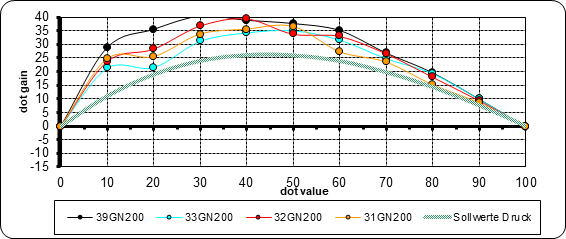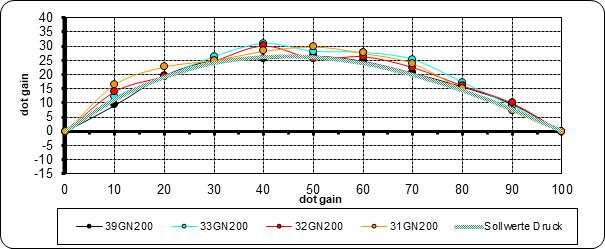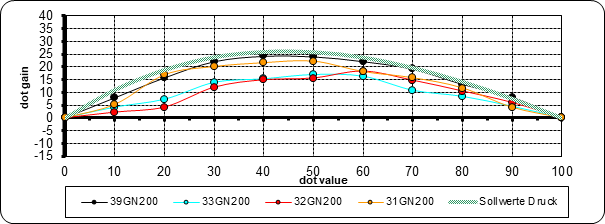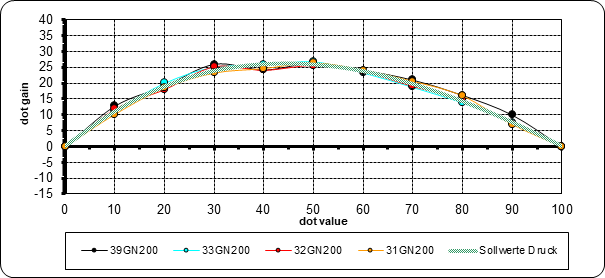How to satisfy your advertising customers thanks to standardised processes
 Advertisers demand consistent print results - no matter where they print and which materials and presses are used. To ensure this, newspaper printers must do one thing above all: standardise all processes in printing – from data input to the finished product – beyond the process standards of DIN / ISO standard 12647-3. The more consistent the standardisation, the more predictable and consistent the quality of the printed product. So as a printer, you benefit from well-executed standardisation as it enables you to reduce the number of complaints (and associated costs) and keep your advertisers happy.
Advertisers demand consistent print results - no matter where they print and which materials and presses are used. To ensure this, newspaper printers must do one thing above all: standardise all processes in printing – from data input to the finished product – beyond the process standards of DIN / ISO standard 12647-3. The more consistent the standardisation, the more predictable and consistent the quality of the printed product. So as a printer, you benefit from well-executed standardisation as it enables you to reduce the number of complaints (and associated costs) and keep your advertisers happy.
But how can standardisation be implemented? First of all, it is important to set concrete goals. This means that you should define which process parameters you want to achieve, taking into account local conditions. Already at this stage, you should overcome departmental boundaries and bring all those involved to the same table, because for successful standardisation every process step must subsequently be carried out within the specified tolerances. An external service provider who has experience with standardisation processes and brings in a neutral point of view is usually helpful here. At hubergroup, we offer this service free of charge when you use hubergroup inks, varnishes or fountain solution additives.
Whenever we conduct a process standardisation, we begin with a thorough analysis of the current situation on-site. This includes a fountain solution analysis, which is evaluated in the laboratory, as well as the determination of the printing plate profiles and the printing of hubergroup-designed test forms for the evaluation of the relevant print data. The determination of the data follows this scheme:
- Exposure of a test form with the stored RIP data
- Determination of the key figures on the printing plate and data backup
- Print of the test form according to the specifications of DIN / ISO 12647-3
- Determination of dot gains in print
- If necessary, correction of dot gains on the plate setter and new exposure
- Reprinting of the test forms according to the specifications of DIN / ISO 12647-3
- Determination of dot gains in the print
This procedure is carried out until the key figures are fulfilled. Based on this, improvement measures and activities such as product developments are derived together with the customer and jointly implemented. PSO certification and participation in the demanding Ifra Quality Club are also taken into account.
However, standardisation does not end with this one-off process. In order to be able to guarantee consistent and high-quality print results in the long term, you should regularly review the individual process steps. Thereby, you can gain a long-term competitive advantage and score points with advertisers.
Would you like to see some examples?
Example 1: Initial print versus correction with identical density full tone
The initial print showed an excessive dot gain in all colours. After correction of the dot gains in accordance with DIN / ISO, the data could be transferred with higher contrast.
Before modification:


After modification:


Example 2: Initial print versus correction with comparable density
With the initial print, a dot gain that was too low was determined, especially in the light areas. After correction of the dot gains in accordance with DIN / ISO, the data could be transferred with more detail in the reproduction.
Before modification:


After modification:


Contact Maik Wundram or Michael Fais to learn more:
Maik Wundram Michael Fais
Technical Sales / Web Offset Printing Technical Sales / Web Offset Printing
Bremer Weg 125 Sonnenallee 1
29223 Celle 85551 Kirchheim-Heimstetten
Phone: +49 172 5125091 Phone: +49 171 6920771
Email: maik.wundram@hubergroup.com Email: michael.fais@hubergroup.com